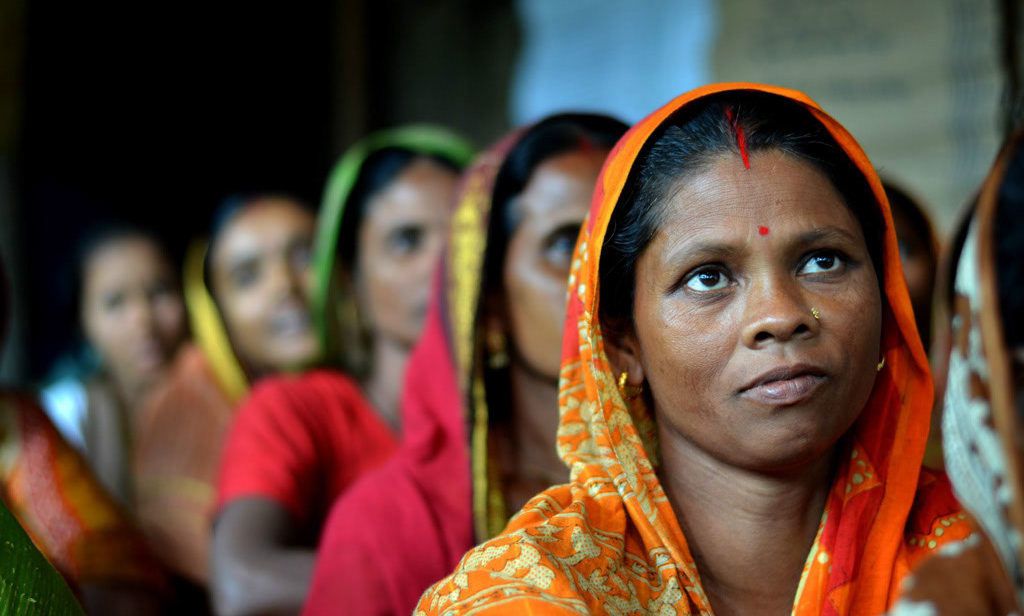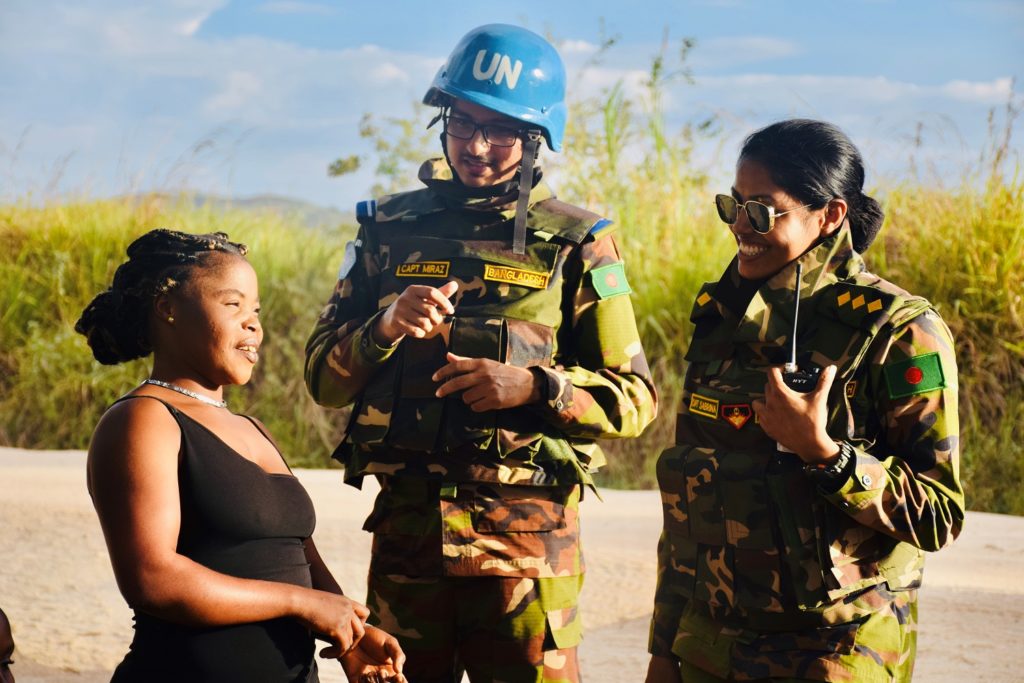
“Around the world, there is a pushback on women’s rights. […] We will push back against the pushback. And we will keep pushing. For wholesale change. For rapid change. And for the meaningful change our world needs, starting by addressing the imbalance in power relations.”
–António Guterres, UN Secretary General
Despite being a relatively new concept, Feminist Foreign Policy (FFP) has been gaining considerable momentum in recent years. In 2014, Sweden became the first country to establish an FFP, putting forth a unique and transformative foreign policy agenda. The Swedish Foreign Service centered their policy around intersectionality focused on the three Rs—rights, representation, resources—which directly impact women. After Sweden, other nations followed suit. In 2017, Canada announced a Feminist International Assistance policy with key areas such as inclusive governance and human dignity. France, Luxembourg, and Mexico declared similar objectives in 2019. However, FFPs have mostly emerged out of Europe, where women’s rights are relatively better than in other regions. FFP’s true test lies in its feasibility in nations where women and minorities face considerable disadvantages.
Across South Asia, women have long faced restrictions of normative gender roles and systematic inequality. Amidst these hurdles, Bangladesh stands out amongst its neighbors in tackling some of these challenges. It was Bangladeshi diplomat and former UN Security Council President, Anwarul Karim Chowdhury’s initiative in March 2000 which contributed to the adoption of the groundbreaking UNSC Resolution 1325 on the role of women in peace and security. In the fifty years since independence, Bangladesh’s economy has seen remarkable growth—much of which was made possible by supporting women’s role in Bangladesh’s economy and workforce. In 2011, Bangladesh put forth the National Women’s Development Policy amidst protests from religious populist groups, and in 2019 established a National Action Plan in line with UNSCR 1325. When looking at the potential for FFP in South Asia, Bangladesh possesses the will, expertise, and experience to be the pioneer in the region.
Feminist Foreign Policy in South Asia
Apart from most institutions being patriarchal in structure, South Asia also suffers from drastically escalating gender-based violence, which has been exacerbated by the COVID-19 pandemic. According to a 2020 survey, 27 percent of Nepali women experienced some form of physical violence at some point in their lives, with 15 percent experiencing sexual violence. 32 percent of women have experienced physical violence in Pakistan, and in Bangladesh, almost every two out of three ever-married women have faced some form of violence from their partners.
When looking at the potential for FFP in South Asia, Bangladesh possesses the will, expertise, and experience to be the pioneer in the region.
The gender gap is also glaring across South Asia. Bangladesh, however, has made notable strides in the past fifteen years in this regard. Much of Bangladesh’s progress has been made in terms of economic development, with women increasingly participating in various sectors of the economy, particularly in Bangladesh’s main remittance earner—the readymade garments (RMG) sector. According to rankings by the World Economic Forum, Bangladesh leads the rankings in South Asia and has risen over 25 places in the Global Gender Gap Index—moving from 91 in 2006 to 65 in 2021 (although down from 50 in 2020). Reducing these inequality indicators is the first step in providing women and minorities equal access to decision making processes, which is a vital prerequisite for adopting a formalized FFP legislation.
Political Participation
Bangladesh stands out most in the political empowerment of women, where it ranks seventh globally in the World Economic Forum Gender Gap Index, and ahead of countries like the United States.1 Women in prime ministerial positions is not an unfamiliar site in Bangladesh, with Bangladesh as the only country in the world where women have held the country’s top office in last fifty years more often than men. However, this sight is not reciprocated in the lower levels of government or even at the ministerial or parliamentary level, especially in the foreign policy apparatus. Among 25 cabinet ministers, there is only one female apart from the Prime Minister herself, and as of the 2018 elections, women only occupied 22 of the 300 contested seats. Bangladesh has made some developments in this regard, setting aside 50 reserved seats for women in parliament in 2011. However, there is still much work to be done and adopting a FFP can play a crucial role in mainstreaming women into all levels of the political sphere.
Economic Development
Once infamously referred to as a “basket case” by Henry Kissinger, Bangladesh has seen remarkable economic growth in the past fifty years. One of the main vehicles behind Bangladesh overcoming its initial cataclysmic economic problems were policies that focused on improving the status of women. While the rest of the world lost hope, government and civic organizations in Bangladesh promoted education, especially for women in poverty, triggering the country’s resurrection from the ashes. The successors of these women—many now garments’ workers—are the backbone of the economy of contemporary Bangladesh.
In 2020, Bangladesh commanded an export value of USD $27.95 billion from its RMG sector. Approximately 80 percent of the 4 million workers employed in RMG factories are women. Microfinance schemes over the past two years have also supported a rise in female entrepreneurship, that has allowed impoverished women access to a stream of credit that traditional financial institutions refuse to provide. The birth of microcredit came from Bangladeshi Nobel Laureate Muhammad Yunus’ recognition of the centrality of women in the poverty alleviation process. Yunus established the Grameen Bank, which began by offering loans of under USD $30 to women in Chittagong to help break the predatory lending of loan sharks. A comprehensive FFP can compound on these efforts by allowing these female entrepreneurs greater access to global markets and the opportunity to compete and contribute to economic development.
Economic policies that have focused employment opportunities have been critical to improving development indicators and supporting Bangladesh’s entire economy. However, policymakers can do more to leverage and support Bangladesh’s significant dynamic female labor force in trade agreements. An FFP approach must also incorporate labor rights and working conditions within the industry. Private companies often look to Bangladesh due to the low cost of employing female labor in factories with poor conditions. The role and rights of women can be made a higher priority during trade negotiations, ensuring higher pay, and better working conditions. An FFP approach that takes into account the safety and security of women and other marginalized groups, would also frame how Bangladesh negotiates for the rights of migrant workers abroad that contribute significantly to remittances in the country.

Investing in women’s economic empowerment paves the way for poverty eradication, gender equality, and inclusive growth. In 2011, Bangladesh implemented its updated National Women Development Policy which set out a detailed guide the government envisions for its women. A noble attempt was made at mainstreaming women into the workforce, with special provisions for the disabled and those from ethnic minority communities. Most notably, the policy highlights and encourages international cooperation “through bilateral and multilateral financial and technical cooperation and exchanges of experience and technology aimed at empowerment of women.” These goals are a strong foundational philosophy for a broader FFP.
Women & Peacekeeping
The Bangladesh armed forces have played an important role in women’s empowerment and gender mainstreaming through the employment of female peacekeepers in many field missions. Dhaka has observed the UN’s target of employing women for 18 percent of all staff officers and military observes and is looking to employ more women in the peacekeeping forces. Since 2019, the Bangladesh Army has included a “Female Engagement Team” who have been deployed in subsequent major contingents in the UN peacekeeping operations. Women peacekeepers have been shown to boost overall peacekeeping performance, promote human rights and inspire other women to become important part of the peace and security landscape. By adopting an FFP which promotes women in peace and security, Bangladesh could contribute to longer-term stability by supporting women’s involvement in peacekeeping. Dhaka also boasts eight female envoys within in foreign policy apparatus.
FFP should not be just confined to increasing the number of women in the foreign service or other branches of government. Rather, the focus should be on moving away from a masculinist structure while developing and designing policies where the needs and rights of women are at the center.
As noted elsewhere, although representation is a crucial starting point it is important that an FFP and a gender-sensitive approach goes beyond just representation. Bangladesh also has the capacity to implement gender-responsive humanitarian action through community engagement and in its response to the Rohingya refugee crisis. Currently, the migration response for Rohingya refugees does not specifically consider the needs for women in the camps and effective collaboration with its NGOs, such as the Bangladesh Rural Advancement Committee, in tandem with host community coordination, can provide gender-sensitive support to refugees as well as its own citizens.
The Way Forward
The concept of FFP is still quite nascent. Socializing this concept in a country like Bangladesh would need work, patience, and determination. However, Bangladesh’s socio-economic indicators are impressive and the Bangladesh government has regularly worked to implement gender-conscious policies that focus on the role of women. The situation across the wider region, however, is becoming increasingly complex. The Taliban coming into power and the uncertain situation in Afghanistan could set back years of development in terms of women's empowerment. One of the many challenges Bangladesh will face is the empowerment of Islamist political groups who have historically been against development policies for women and minorities.
Furthermore, FFP should not be just confined to increasing the number of women in the foreign service or other branches of government. Rather, the focus should be on moving away from a masculinist structure while developing and designing policies where the needs and rights of women are at the center. Over the years, Bangladesh has championed ground-breaking international policy initiatives such as Women, Peace & Security agenda at the United Nations. Bangladesh also has the opportunity to take a leadership role in FFP formulation in South Asia. FFP for Bangladesh is certainly in the cards, and, if implemented, has immense potential to contribute for development in the country and serve as a foundational framework for the region.
Shafqat Munir is currently a Research Fellow at the Bangladesh Institute of Peace and Security Studies and the Head of the Bangladesh Centre for Terrorism Research The author would like to thank BIPSS Research Intern Mr. Subham Barua for his assistance in research to this paper.
Editor’s Note: Since Sweden announced a Feminist Foreign Policy in 2014, several other nations have also begun this journey, however the conversation and frameworks are largely rooted in western countries. In this series, run jointly with the Kubernein Initiative, contributors from across the subcontinent discuss what it means to have a “feminist foreign policy,” and how this approach could merge efforts in foreign affairs, regional policy and geopolitics, development and women’s empowerment in South Asia. The series asks to what extent countries in South Asia have incorporated a Feminist Foreign Policy approach, and the ways in which a gender-conscious approach may support security, democracy, and diplomacy on the subcontinent. Read the full series here.
***
Image 1: IFPRI via Flickr
Image 2: MONUSCO photo via Flickr
- The 2021 “Global Gender Gap” report by the World Economic Forum evaluated 156 countries. In the table below, a score of one represents reaching parity in the indicator assessed. For more information, the full report is available at: https://www.weforum.org/reports/global-gender-gap-report-2021.


